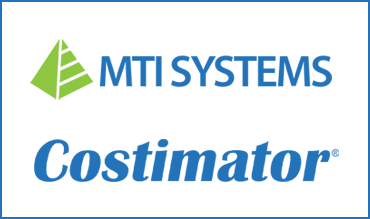-
-
Phone: 413-733-1972
Should Cost Software helps Lenovo Model PC costs
Should Cost Software helps Lenovo Model PC costs
By Doug SmockLenovo is using "should-cost" modeling from a software program to reduce costs for personal computers, both through improved design and through an improved negotiating position with suppliers. The Chinese-owned company is on the leading edge of what may be one of the hottest emerging trends in supply management: use of software to improve understanding of what contributes to a product’s cost.
The tool used by Lenovo is Costimator OEM from MTI Systems in West Springfield, Mass. "The main purpose is to understand what your costs are and what they should be," says Lenovo’s John Kagan. Once you understand that, you are in a good position to achieve those costs. Knowing what you should be paying when you go into a negotiation gives you a lot of strength. "Also your understanding of how to optimize your designs produces savings that go right to the bottom line."
Kagan was manager of PC Cost Management when Lenovo acquired the personal computer business from IBM in 2005. He is now manager of Global Desktop Manufacturing Engineering at Lenovo. In 2003 and 2004 IBM saved more than $10 million through use of the Costimator, estimated Kagan.
"We used Costimator OEM on a plastic part where we developed the optimal cycle times and materials usage," comments Kagan. Costimator provided rates for the optimal injection molding machine and showed the estimated should costs. "We use aggressive assumptions," says Kagan, "which we should for high-volume manufacturing and the types of suppliers we are using. We input the tooling cavitation, part yields and cycle times, and we believe the resulting cost estimate is what we should be paying for the part." Negotiations require detailed discussion on the variables used in the assumptions.
Injection molding times have been modeled within Costimator for about the past two years. Costimator goes back to the early 1980s and its original fortes were machining, fabrication and mechanical assembly. It was started by Thomas Charkiewicz, who had worked in manufacturing for United Technologies and other companies before getting a CAD/CAM degree from the University of Massachusetts and launching MTI Systems. Costimator now also includes a function called "IQ Builder" in which customers can model almost any manufacturing process, using their own historical data. The manufacturing data that resides within Costimator was derived from the company’s 900 plus customers in addition to various independent industry sources. Worldwide labor costs come from Bureau of Labor Statistics data collected from W-2 forms.
IBM had a treasure trove of its own data at the time it acquired Costimator in 2002. IBM, like many large OEMs, had done its own cost estimating dating back to the 1960s. Using manual processes and later spread sheets, IBM industrial engineers modeled costs for injection molding, die casting, cable manufacturing and card assembly for the production of monitors, terminals, keyboards, typewriters and mainframe computers. IBM software engineers developed a tool called Pisces in which it began to automate the estimating process.
As manufacturing begin to move to third-party manufacturers in the late 1980s, IBM could quickly calculate what should stay and what should go. "As we moved manufacturing out of IBM, we used the tool to ensure that we were getting the right prices from our suppliers," adds Kagan. Soon IBM was also using the tool to estimate what it costs its competitors to make the same products. "And from that we developed a lessons-learned type of approach to apply to our next designs. We also then tried to project where our customers were going and build that into a cost-optimization process."
The Pisces tool was not user-friendly and required significant time for training. IBM looked outside and picked Costimator because it covered a variety of processes, had drop-down menus, offered fast training and was customizable. IBM, for example, loaded all of its historical data into its Costimator system.
MTI Systems' Charkiewicz estimates that use of the Costimator can save 10 to 30% as a should-cost tool. If companies use it as a "could-cost" tool, savings potentially rocket to 70%. "Could-cost is where purchasing has done a better-than-average job fitting the part to the right-sized shop," he says. "Generally purchasing people will request a quote from a supplier he trusts and is comfortable with. That supplier may use a 90 hp machine to make that part when only a 5 hp machine was required."
Charkiewicz says that buyers who use could-cost analysis also wise up to the fact that suppliers use operators to run more than one machine and group jobs for various customers in a single work table. A machine shop may charge a customer X-dollars for a part made on a given machine, which is actually making parts for four customers on a given cycle. The supplier pockets four-times-X for the cycle of the machine.
Another area for improvement with costing strategy is how you pay for set-up time on a machine. "One customer was paying $65 for a part that should have cost only $3.50 at the most," says Charkiewicz. "The first time a buyer ordered the part, he only ordered six and that price went in the books. The next buyer is a recent college graduate who looks up the price and orders 10,000 for $65 a piece. The supplier laughs all the way to the bank."
The Costimator system is based on a detailed step-by-step analysis of the costs to manufacture a part or assembly. The data includes optimal times for each step and the amount of labor input required. Lenovo then plugs in its own data for materials costs based on negotiated contracts. IBM had also done significant research on manufacturing costs on various geographies around the world. Costs can be estimated for China versus Mexico, for example.
The Lenovo tool operates on a standalone basis. That is, it has not been tied into the company’s spend data warehouse or product lifecycle management tools. Charkiewicz says that’s generally the case because of high costs involved.
Republished with permission from GlobalCPO.com

Costimator®
Cost Estimating Software for Manufacturing
-
Cost Estimating Sheet Metal
-
Estimating for Machined Parts
-
Quoting for Machining and Fabrication




